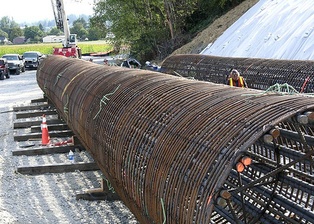Centralizers are used in the environmental drilling industry. There is some debate, however, on whether they are a help or a hindrance on different projects.
What Is A Centralizer?
A centralizer is a mechanical device that keeps well casing from touching the sides of the wellbore. This gives the drilling team a complete 360-degree space around the casing for applying cement or other completion materials.
In the drilling industry today, there are two kinds of centralizers used. The first is a bow-spring centralizer. This simple device is slightly larger that the borehole. The spring mechanism holds the pipe in place by applying pressure against the sides of the wellbore. The downside to the bow-spring design is that it does not support the weight of pipe very well.
The second kind of centralizer in use today is the rigid blade design. This device uses rigid blades arranged around the casing to keep it from touching the sides of the wellbore. The blade diameter is slightly smaller than the diameter of the borehole. The device provides better support for the weight of a pipe, but does not keep the casing as well centered as the bow-spring design.
Are Centralizers Required?
Many state and federal agencies recommend or require centralizers in certain drilling projects. This is especially true in situations where grouting the annular space around the casing is a requirement in the project.
How Are Centralizers Applied?
Bow spring centralizers come in two varieties: slip-on and hinged. A slip-on design has solid rings on either end that slip over the end of the casing as it goes down the borehole. A hinged design comes in sections that the drilling crew assembles around the casing with hinge pins.
Rigid blade centralizers are made with a slip-on design. They secure to the casing with set screws.
What Advantages Do Centralizers Bring To Drilling Projects?
When setting well casing, one of the most critical steps is applying the cement around the casing. To get a good quality cement job, the casing must be held central to the wellbore. Centralizers help make this happen.
- They center the casing in the borehole, providing an even space around the casing for cementing.
- They reduce casing drag when running the casing into the borehole.
- They prevent differential sticking of the casing as it is run into the hole.
- They prevent caking on wellbore walls by increasing the amount of fluid turbulence.
- They can run through restricted areas of the wellbore, keeping the casing beneath the restrictions.
If you’re in need of environmental drilling services in Texas, New Mexico or Oklahoma, contact Talon/LPE Drilling Services today.

